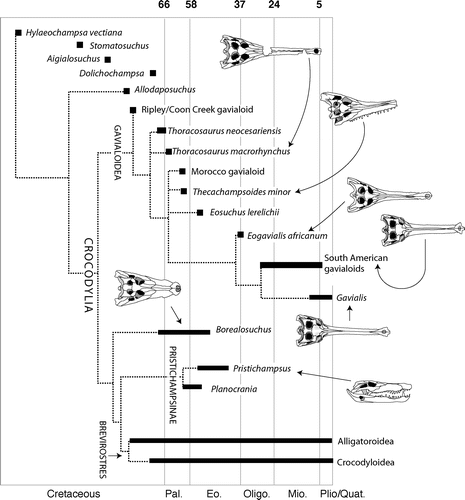Death Roll Behavior in Crocodilians
Biology 342 Fall 2006
Augustus Kilgore and Maya Jarrad
Phylogeny
Almost all Crocodilians, both extinct and living, do not use their teeth to process their food before ingestion. That is, they swallow everything whole (3). Because of this, they do not have teeth which are evolved for tearing or cutting, and so almost all of these species display (or displayed, as most are extinct) death roll behavior (1, 3, 4). The behavior therefore is fairly old relative to the Crocodilian order, as it is not really believable that most of 23 extinct species evolved a behavior as unusual as the death roll in homeoplasic fashion.
Rotational feeding behavior has been shown to also exist in caecilians, a species of subterranean amphibians (2). Given the extremely prehistoric nature of amphibian/reptile divergence, this is likely an example of homoplasic evolution, as well as being a clear demonstration of the effectiveness of this line of adaptation.
The chart below shows the phylogenetic tree of crocodilians. It has been shown that in ancestral crocodilians at least, those with the shorter, wider skulls and snouts are those adapted to torsion feeding. The long narrow snouts are not adapted to withstand the torsion forces associated with the behavior, and the stress patterns in fossilized skulls of these species back this hypothesis up (4).

Above is the phylogenetic tree for crocodilians (adapted from ref 5)